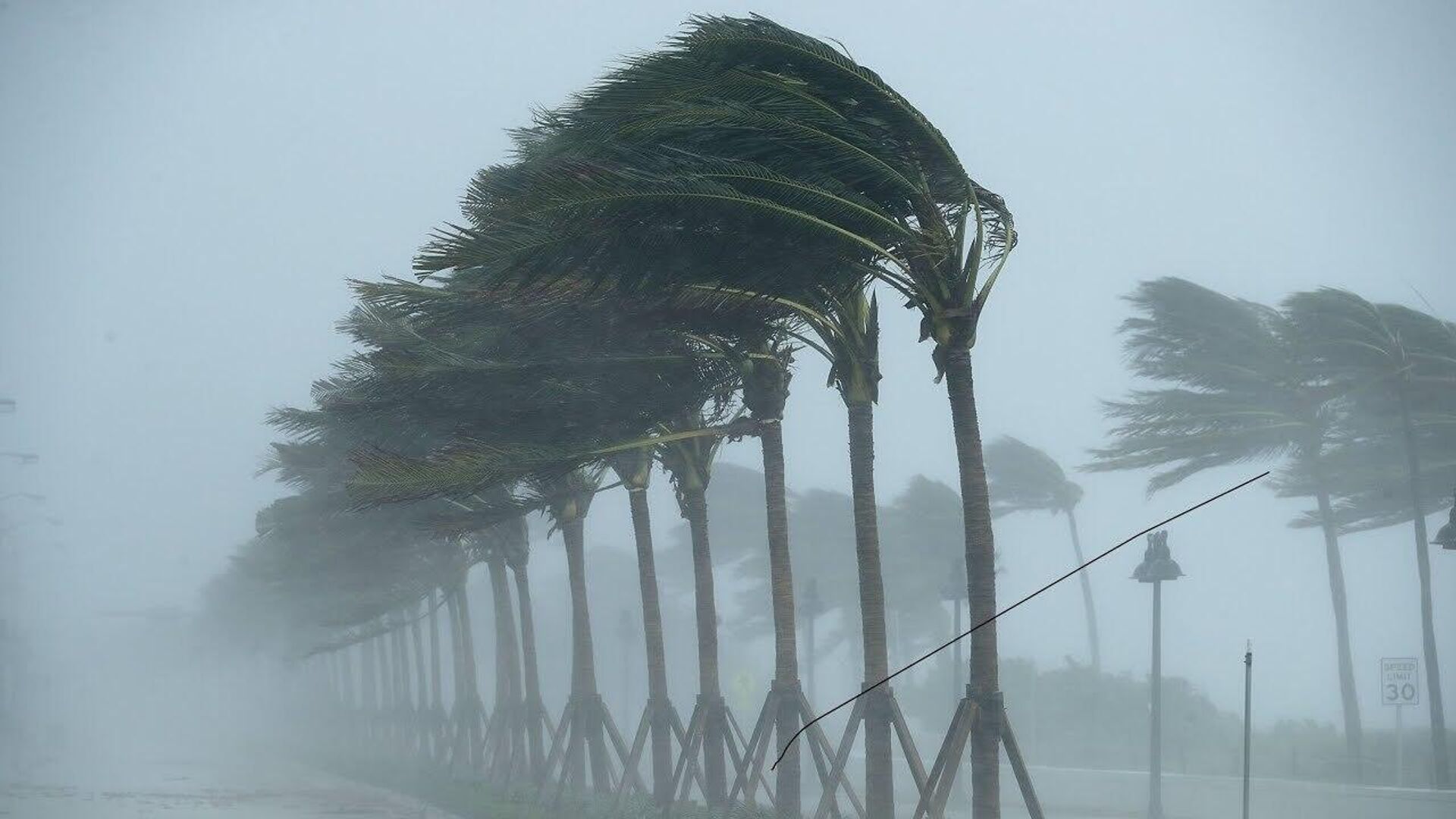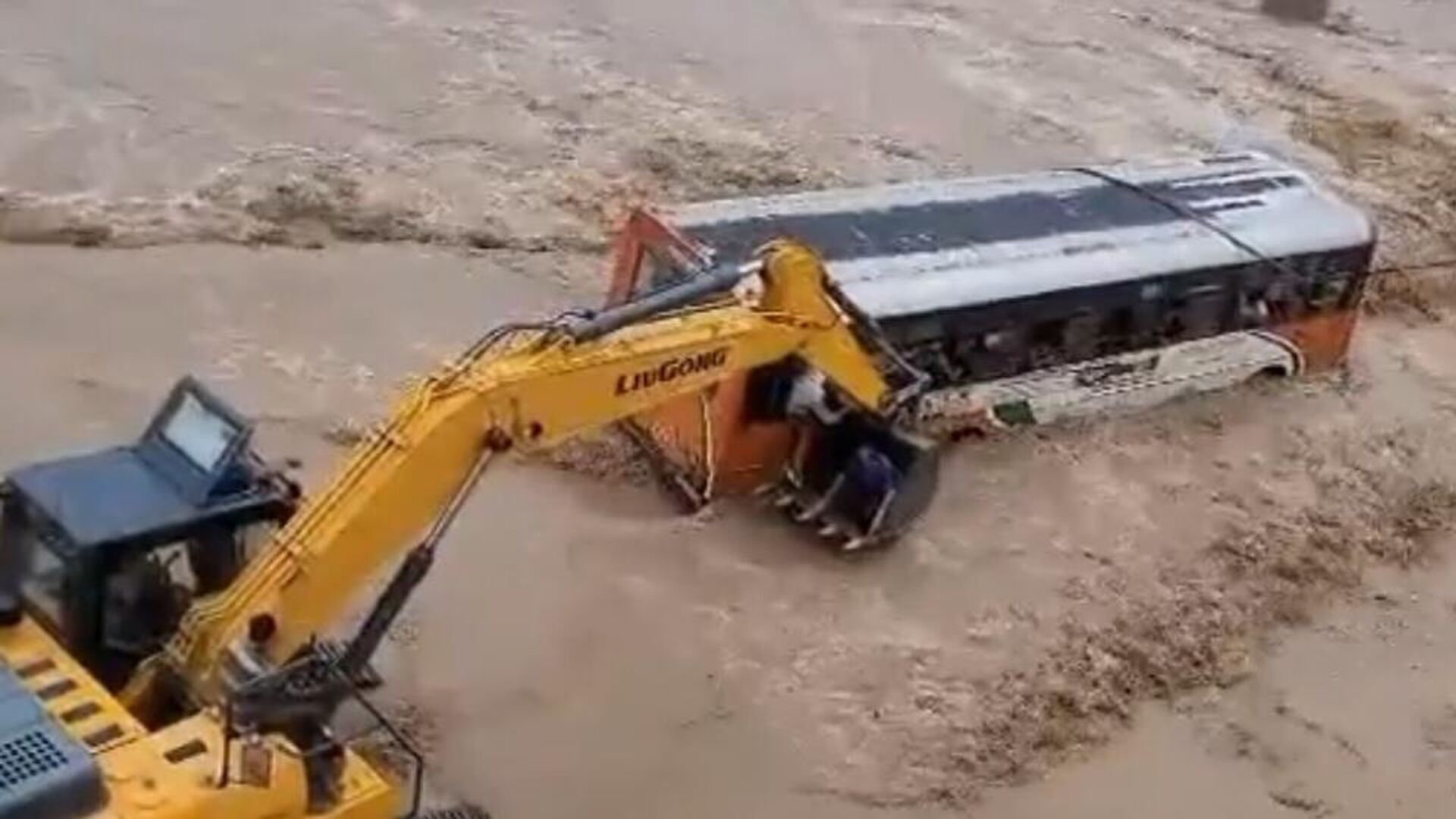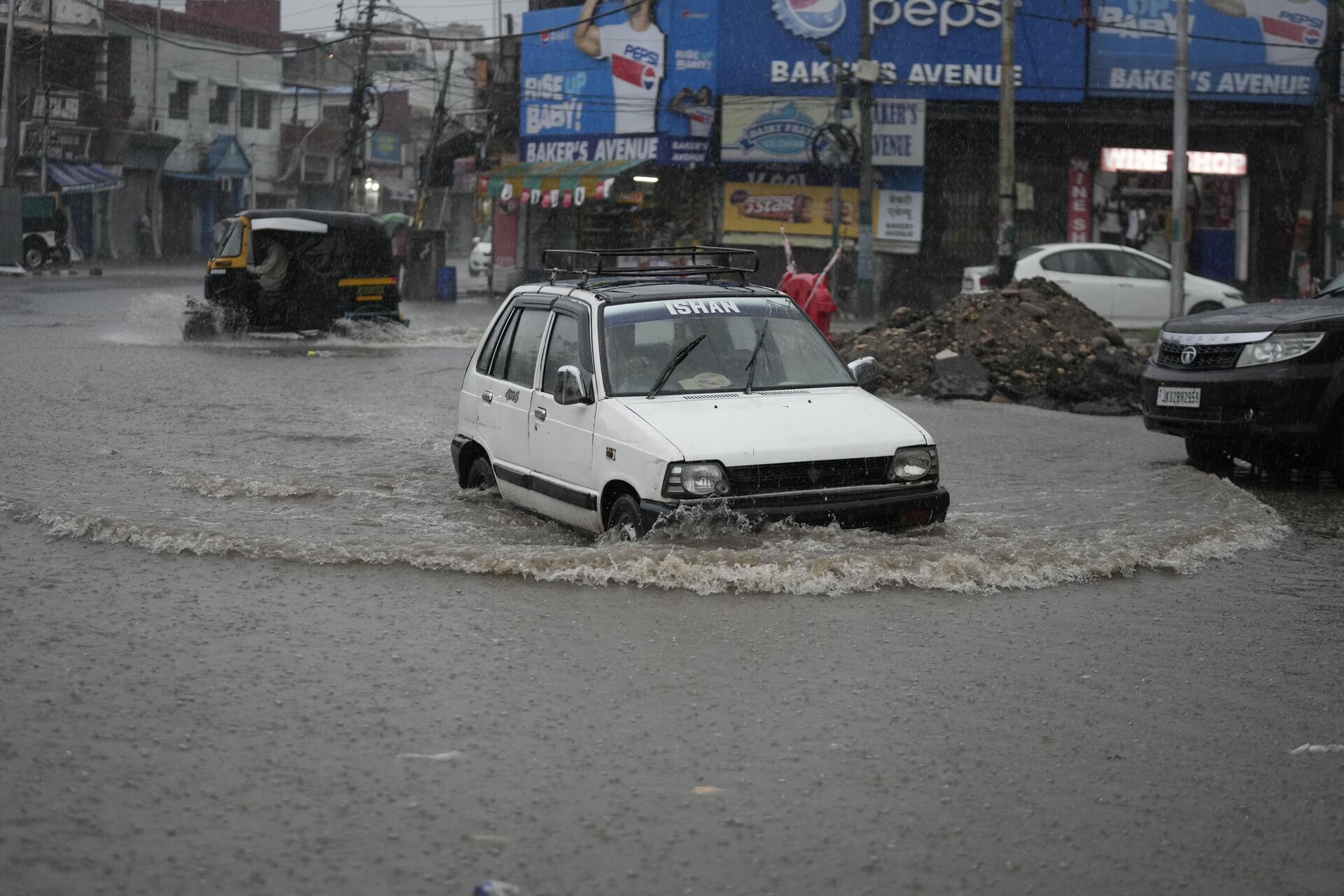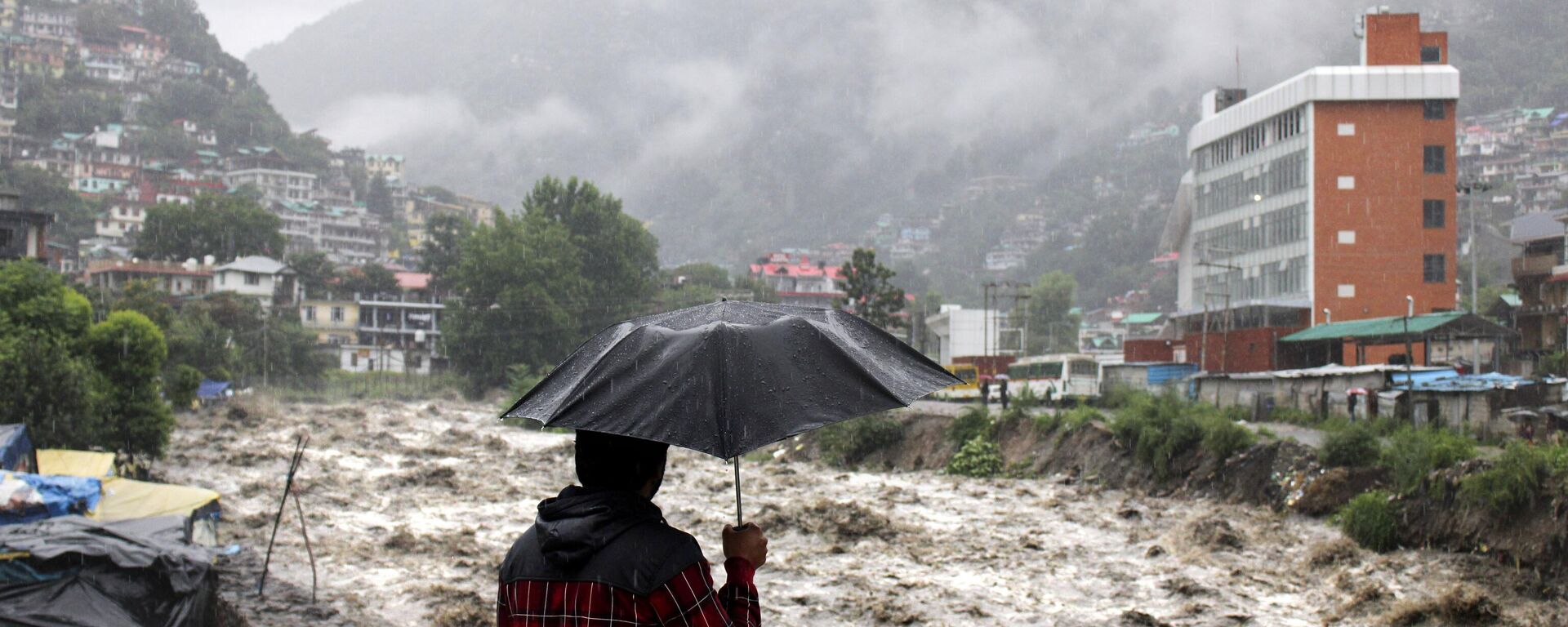https://sputniknews.in/20230826/why-is-it-raining-so-much-in-north-india--3841611.html
Why is It Raining so Much in North India?
Why is It Raining so Much in North India?
Sputnik India
This year, the Himalayan regions of India are witnessing heavy rainfall and many cloudburst incidents leading to landslides and deaths.
2023-08-26T09:10+0530
2023-08-26T09:10+0530
2023-08-26T09:10+0530
sputnik opinion
india
government of india
himachal pradesh
uttaranchal
uttarakhand
india meteorological department (imd)
monsoon rains
climate change
floods
https://cdn1.img.sputniknews.in/img/07e7/05/09/1873961_0:0:1280:720_1920x0_80_0_0_3369b5b8d01e4ad98c7b7c77c47ce06b.jpg
Sputnik India has spoken with experts to understand the cause behind such deadly incidents and what steps should be taken by the government to minimise the impact.India's Himalayan states of Himachal Pradesh and Uttarakhand have been shambling since the onset of the monsoon season this year. Himachal Pradesh remains the worst-hit state, which has so far reported 250 deaths and the destruction of hundreds of properties, causing losses in billions of rupees. The situation remains similar in Uttarakhand, where 75 people have died so far.South Asia receives 70-90 percent of the total annual rainfall during the four months from June to September.Indian Meteorological Department (IMD) Director General Dr Mrutyunjay Mohapatra told Sputnik India that this year, massive rain is being recorded due to the interaction of the monsoon and western disturbance. Interaction Between Monsoon and Western Disturbance“It all happens due to monsoon interaction with mid-latitude, westerlies or western disturbances. And, the monsoon trough is lying close to the foothills, and that means monsoon passing over this area; hence these areas get more rain”, Dr Mohapatra said.El-Nino Impact? Climate Change & Erratic Deadline“These changes pose significant challenges to various sectors, including agriculture, infrastructure, and disaster management”, he stressed.However, the professor said that adapting to the new norm requires a comprehensive approach, including climate-resilient policies, advanced forecasting systems, and sustainable practices to mitigate the adverse impacts of these erratic weather patterns on the nation's socio-economic fabric.Himalayan Region: Land SubsidenceGiven the Himalayas’ fragile ecology, scientists have warned about these incidents for many years. Himachal Pradesh and Uttarakhand are known for their popular tourist destinations, and often, the infrastructure there is built without taking into consideration ecology or violating laws.However, it is often forgotten that the Himalayas are young mountains and more susceptible to damage during natural events in case of heavy construction.Focusing on this, Prakash said: “Himalayan terrain responds to changing weather patterns. Accelerated glacial melting, altered precipitation trends, and irregular temperature shifts affect this sensitive ecosystem. The region witnesses an increased frequency of landslides, glacial lake outbursts, and flash floods, posing heightened risks to both human settlements and biodiversity”.What Can Gov't Do? Professor Prakash further stressed urgent action against climate change, “The intricate interplay between changing weather patterns and the delicate Himalayan terrain necessitates robust monitoring, risk assessment, and sustainable land management strategies. Collaborative efforts are crucial to understanding and mitigating the cascading effects of these changes, safeguarding both the region's environmental equilibrium and the communities dependent on it”.Prakash said that the government's role is crucial in such cases, and it needs to adopt a multifaceted approach, which includes “enhancing early warning systems for timely alerts on potential disasters, bolstering infrastructure resilience through strategic planning and engineering measures, implementing strict land-use regulations to prevent construction in high-risk zones, promoting community awareness and preparedness, and investing in sustainable development practices”.He also added that international collaboration should be done, and sharing data and research should be included so that knowledge exchange can further empower effective disaster management strategies, ultimately minimising loss of life and property in the face of these evolving challenges.
https://sputniknews.in/20230816/heavy-rains-at-least-66-dead-in-landslide-in-himachal-uttarakhand-3646427.html
india
himachal pradesh
uttaranchal
uttarakhand
Sputnik India
feedback.hindi@sputniknews.com
+74956456601
MIA „Rossiya Segodnya“
2023
Deexa Khanduri
https://cdn1.img.sputniknews.in/img/07e6/0c/13/138923_52:0:533:481_100x100_80_0_0_cadf23d341691fc65ff2b22fd1afe584.jpg
Deexa Khanduri
https://cdn1.img.sputniknews.in/img/07e6/0c/13/138923_52:0:533:481_100x100_80_0_0_cadf23d341691fc65ff2b22fd1afe584.jpg
News
en_IN
Sputnik India
feedback.hindi@sputniknews.com
+74956456601
MIA „Rossiya Segodnya“
Sputnik India
feedback.hindi@sputniknews.com
+74956456601
MIA „Rossiya Segodnya“
Deexa Khanduri
https://cdn1.img.sputniknews.in/img/07e6/0c/13/138923_52:0:533:481_100x100_80_0_0_cadf23d341691fc65ff2b22fd1afe584.jpg
himalayan states, monsoon season, destruction of hundreds of properties, road causing losses in billions of rupees, south asia receives, indian meteorological department (imd) director general dr mrutyunjay mohapatra, western disturbance, interaction between western disturbance, el-nino impact, central peninsular regions, monsoon intraseasonal oscillations, anjal prakash, clinical associate professor (research) and research director at isb and ipcc author, himalayan region: land subsidence,
himalayan states, monsoon season, destruction of hundreds of properties, road causing losses in billions of rupees, south asia receives, indian meteorological department (imd) director general dr mrutyunjay mohapatra, western disturbance, interaction between western disturbance, el-nino impact, central peninsular regions, monsoon intraseasonal oscillations, anjal prakash, clinical associate professor (research) and research director at isb and ipcc author, himalayan region: land subsidence,
Why is It Raining so Much in North India?
Deexa Khanduri
Sputnik correspondent
This year, the Himalayan regions of India are witnessing heavy rainfall and many cloudburst incidents, leading to landslides and deaths.
Sputnik India has spoken with experts to understand the cause behind such deadly incidents and what steps should be taken by the government to minimise the impact.
India's Himalayan states of Himachal Pradesh and Uttarakhand have been shambling since the onset of the monsoon season this year.
Himachal Pradesh remains the worst-hit state, which has so far reported 250 deaths and the destruction of hundreds of properties, causing
losses in billions of rupees. The situation remains similar in Uttarakhand, where 75 people have died so far.
South Asia receives 70-90 percent of the total annual rainfall during the four months from June to September.
Indian Meteorological Department (
IMD) Director General
Dr Mrutyunjay Mohapatra told
Sputnik India that this year, massive rain is being recorded due to the interaction of the monsoon and western disturbance.
Interaction Between Monsoon and Western Disturbance
“Monsoon is a large scale phenomena, it varies year to year, even day to day. This year, basically, there have been two severe spells of activity, one was between 8-15 July -- Jammu & Kashmir, Himachal Pradesh and Uttarakhand received heavy to very heavy rainfall due to the interaction of the monsoon and the western disturbance", Dr Mohapatra said.
"The second spell came between 13 and 14 August, again, there was some kind of interaction between Western disturbance leading to landslides and a third spell from August 22 to 23”, Dr Mohapatra added.
“It all happens due to monsoon interaction with mid-latitude, westerlies or western disturbances. And, the monsoon trough is lying close to the foothills, and that means monsoon passing over this area; hence these areas get more rain”, Dr Mohapatra said.
“El-Nino is already impacting the weather pattern and monsoon between 55-68 percent, in June and July, we have seen no impact of rains, but in August, El-Nino impact is seen on rainfall activities. During El Nino, the plains of India, including central peninsular regions, receive less rain, but the foothills receive heavier rain. At the same time, we are seeing monsoon intra-seasonal oscillations in the Bay of Bengal”, Mohapatra explained.
Climate Change & Erratic Deadline
Anjal Prakash, clinical associate professor (research) and research director at the ISB and IPCC author, told Sputnik India, “The evolving weather patterns in India are increasingly displaying erratic behaviour, marked by unpredictable fluctuations. This shift is evident through heightened occurrences of extreme weather events such as intense storms, prolonged droughts, and erratic monsoon patterns”.
“These changes pose significant challenges to various sectors, including agriculture, infrastructure, and disaster management”, he stressed.
However, the professor said that adapting to the new norm requires a comprehensive approach, including climate-resilient policies, advanced forecasting systems, and sustainable practices to mitigate the adverse impacts of these erratic weather patterns on the nation's socio-economic fabric.
Himalayan Region: Land Subsidence
Given the Himalayas’ fragile ecology, scientists have warned about these incidents for many years. Himachal Pradesh and Uttarakhand are known for their popular tourist destinations, and often, the infrastructure there is built without taking into consideration ecology or violating laws.
However, it is often forgotten that the Himalayas are young mountains and more susceptible to damage during natural events in case of heavy construction.
Focusing on this, Prakash said: “Himalayan terrain responds to changing weather patterns. Accelerated glacial melting, altered precipitation trends, and irregular temperature shifts affect this sensitive ecosystem. The region witnesses an increased frequency of landslides, glacial lake outbursts, and flash floods, posing heightened risks to both human settlements and biodiversity”.
Professor Prakash further stressed urgent action against climate change, “The intricate interplay between changing weather patterns and the delicate Himalayan terrain necessitates robust monitoring, risk assessment, and
sustainable land management strategies. Collaborative efforts are crucial to understanding and mitigating the cascading effects of these changes, safeguarding both the region's environmental equilibrium and the communities dependent on it”.
Prakash said that the government's role is crucial in such cases, and it needs to adopt a multifaceted approach, which includes “enhancing early warning systems for timely alerts on potential disasters, bolstering infrastructure resilience through strategic planning and engineering measures, implementing strict land-use regulations to prevent construction in high-risk zones, promoting community awareness and preparedness, and investing in sustainable development practices”.
He also added that international collaboration should be done, and sharing data and research should be included so that knowledge exchange can further empower effective disaster management strategies, ultimately minimising loss of life and property in the face of these evolving challenges.





